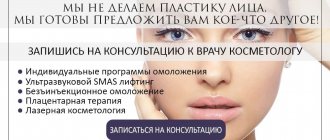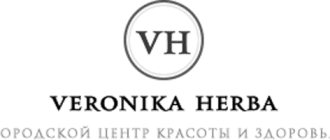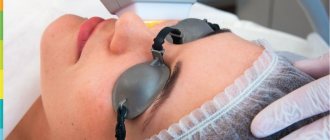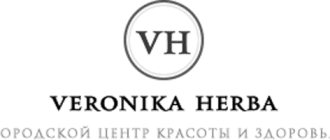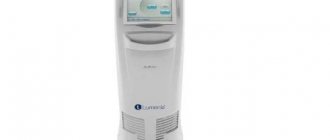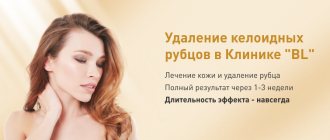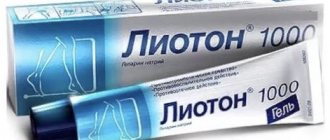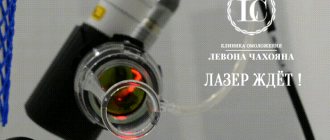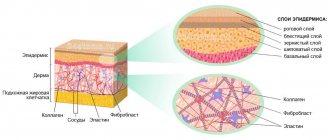Sanding can quickly correct imperfections. The procedure improves tissue blood circulation and stimulates collagen production. The laser has an aggressive effect on the dermis. After it, skin cells begin to divide, the damaged area is filled with new cells.
Laser resurfacing rejuvenates skin
During the grinding process, the top layer of skin is completely removed; the depth of laser exposure is determined by the doctor. The patient’s appearance deteriorates after visiting a cosmetologist, because after the procedure the face becomes red. Swelling may occur, so the client should be prepared for a lengthy recovery process.
Today, beauty salons offer clients fractional resurfacing. It is less damaging to the dermis, because the cosmetologist uses a laser to remove the top layer of skin only in certain areas. Typically the area where blemishes are located, such as scars or acne marks, is treated. The impact is aimed at micro areas, so the skin is restored faster.
The effect of laser is highly effective; the method is not inferior to surgical removal of scars.
The procedure can be performed with the following lasers:
- Carbon dioxide. It is best for resurfacing stretch marks and scars. But you need to take into account that during laser exposure the surface of the skin becomes very hot, so burns are possible. After the procedure, patients face a long recovery period.
- Erbium. The device is more modern; the outgoing radiation is divided into several beams. The heat is dissipated, so even sensitive skin will not be burned. Erbium laser is used to treat eyelids and décolleté. After the procedure, a lifting effect is noticeable. This occurs because undamaged skin cells that were not exposed to the laser are pulled together over the damaged ones.
Before the procedure begins, the patient is given anesthesia. For a small treatment area, the cosmetologist applies an anesthetic gel to the face; it will make the skin less sensitive.
In order to achieve the desired effect, laser resurfacing must be done in courses. After 3 visits to a cosmetologist, skin defects that cannot be eliminated with cosmetics will disappear.
Indications and contraindications for the procedure
- Post-acne - spots (scars) left after acne;
- Acne (pimples);
- Presence of scars, skin defects (atrophic, keloid scars);
- Fine facial wrinkles, age-related changes, sagging skin;
- Enlarged pores, vascular mesh with a depth of up to 4 mm, a diameter of up to 2 mm;
- Stretch marks, stretch marks, defects after chickenpox, cesarean section;
- Hyperpigmentation.
Contraindications are age under 18 years, pregnancy. The procedure should be abandoned if you have cancer, viral diseases, skin infections, or diabetes. In case of exacerbation of chronic diseases, photodermatitis and severe tanning, it is better to reschedule the session. For uncompensated heart problems and epilepsy, resurfacing is contraindicated.
Types and stages of scars
Types of scar damage:
- Atrophic. Formed as a result of minor skin lesions (after acne). They are slightly retracted into the skin and have a light whitish tint.
- Normotrophic. Appear as a result of minor injuries and damage to the skin. Such scars do not have a bright shade, they are almost invisible to the eye.
- Hypertrophic. This type is typical for more serious skin injuries. The scar areas are compacted and rise above the surface of the skin. This problem can affect the arms and neck area.
- Keloids. At the site of these scars, connective tissue grows around the scar. These are dense, lumpy formations that are distinguished by a bright shade (pink or bluish). This type of skin defect manifests itself not only externally. It causes itching and pain. Laser resurfacing of a keloid scar will be more complex.
Knowing the type of scars on your skin will help you choose the appropriate treatment method.
Scars form in areas of former skin damage. This could be inflammation, injury, or cuts. During the healing process, connective tissue rich in collagen is formed.
Because of this, scars:
- smoother than the rest of the skin;
- have fewer functional properties;
- do not change shade when tanning.
In this case, hair follicles and sweat glands are not restored. Scars vary in color and appearance.
Modern medicine does not answer the question of why keloid scars appear and why pain occurs. The formation of hypertrophic scars is explained by the skin's overly sensitive reaction to injury. Atrophic and normotrophic scars are formed as a result of a natural reaction to minor damage.
Read material on the topic: Laser removal of stretch marks in a beauty salon: pros and cons of the procedure
What is good about laser resurfacing: pros and cons of the procedure
- The result is noticeable immediately.
After the first procedure, patients note a positive effect. - Safely.
The laser beam is precisely directed to the defect, without capturing healthy tissue. In addition, modern laser equipment is equipped with a cooling system that reduces the patient’s discomfort, and before the session the skin is lubricated with an anesthetic cream. - Fast recovery.
The rehabilitation period takes only 3-5 days (on average). Swelling and redness disappear on their own within a few days, after which the patient can return to their normal rhythm of life. You just need to follow the recommendations - refuse to visit the gym, baths, saunas, and do not sunbathe. - Versatility.
Laser resurfacing is used to eliminate aesthetic imperfections on the skin of the face and body, as well as to eliminate the consequences of sudden weight loss (stretch marks), cesarean section and other operations.
Sanding is perfect if you want to shine and look especially attractive at an event. This is an ideal choice for aging skin, as well as for cases where deep resurfacing of scars is needed.
The method is significantly more effective than home peels – you will immediately notice the difference. Those who have had Botox injections should take into account that the effectiveness of the therapy will decrease.
Disadvantages of laser resurfacing
After the procedure, a burning sensation occurs (like after a sunburn). It goes away quite quickly, within a few hours.
In the first 2-3 days after resurfacing, severe swelling is possible.
What you need to know about scars
The appearance of scars causes pain on the skin, making it difficult to move the facial muscles. Soreness and unaesthetic appearance cause anxiety and stress.
Even small scars on the face cause a lot of negative emotions. Specialists of modern cosmetology and medicine are concerned with finding effective methods for the prevention, correction and treatment of this problem.
A mechanical wound heals within a year. This is a complex recovery process that ends with the appearance of a scar. Changes in tissues continue after healing, but they all occur slowly and imperceptibly to the eye.
Before you decide whether you will correct your scars with laser resurfacing or some other method, you need to determine the nature of the defect. There are physiological and pathological scarring. In the first case, scars form after injuries. They are pale, almost invisible. Pathological scars are usually large and bright in color.
Treatment should be selected based on the individual characteristics of the damage: the size of the scar, the duration of its existence on the skin, and the nosological form. It is impossible to completely remove scars that have already formed. Correction can significantly reduce damage and smooth the skin. Usually this process is very long.
An advanced modern technique for correcting such defects is laser scar resurfacing.
Let's try to figure out what scars are and why they occur.
By their nature, these are dense formations in the connective tissue of the skin. This defect appears during the healing process of the injuries received. In areas of scar formation, the tissue contains collagen, which is why the scars acquire a special shade. In these areas, the sweat glands and hair follicles will no longer be able to recover. Scars do not change color from exposure to ultraviolet radiation.
Read material on the topic: Atrophic scars on the face - causes of formation and main methods of treatment
Types of laser resurfacing
- Carbon dioxide (CO2)
– for polishing stretch marks, scars, eliminating neoplasms. The downside is the intense heat. - Erbium
- the equipment emits several micro-rays, heat is dissipated and does not irritate sensitive skin. The procedure creates a lifting effect, suitable for the neck and eyelids. - Fractional (non-ablative rejuvenation)
– renews aging skin, triggers regeneration and collagen production. Healthy tissues are not injured, the effect is targeted.
Laser machines are used for the procedure: DOT CO2, Dermablate, Fotona, CANDELA CO2RE, Halo, Deka. Let's take a closer look at which is better, what are the pros and cons of each type of laser.
Fractional apparatus DOT CO2
provides rapid photorejuvenation. Microdamages form at a certain depth. They alternate with undamaged tissue, resulting in faster recovery. The procedure is painless and has minimal risk of scarring. Recovery takes 3-5 days.
Fractional CO2RE plant
provides a fast-acting rejuvenation effect, eliminates scars and wrinkles. The device affects deep and superficial layers. Doctors use laser to refresh the skin, make the tone even, significantly improve the eye area, eliminate stretch marks and enlarged pores.
Fractional laser resurfacing is performed using the DOT DEKA
. Modern equipment delicately eliminates tumors and reduces the rehabilitation period. Patients are attracted by the pronounced rejuvenation effect. The laser creates microdamages, as a result the body launches recovery processes.
Erbium rejuvenation using the Dermablate
effective for pronounced age-related changes. The device makes the skin smooth and radiant. After grinding, “crow’s feet” disappear, the oval is tightened, pigmentation is reduced, and the skin texture becomes even. The course consists of 3-4 procedures at weekly intervals.
Erbium laser Fotona
is the coldest, so the procedure is painless and recovery is fast. Depending on the desired effect, the device operates in different modes.
Halo System
– the first hybrid laser, with the help of which good results are achieved with a minimal recovery period. Results are noticeable after 1-3 sessions. The built-in cooling system ensures a painless effect. During the procedure, the deep layers of the skin are rejuvenated, while the epidermis is renewed. As a result, the relief is smoothed, pigmentation disappears, and pores are reduced.
Neodymium laser SYNCHRO FT
eliminates pigment spots and dilated blood vessels, is used to treat acne and its consequences. The equipment acts superficially and on the deep layers of the skin. Thanks to the cooling system, the patient does not feel pain. You can split pulses into sub-pulses to prevent overheating.
The essence of fractional laser rejuvenation
One of the newest modern developments in the field of cosmetology is the technique of fractional laser rejuvenation. Currently, it is not without reason that it can be called the most popular of all laser therapy procedures.
During the session, a laser beam passed through a special fractional grid breaks up into a large number of microbeams. This method provides a targeted (fractional) effect on the skin without completely disrupting it.
Recommended articles on the topic:
- Ultrasonic facial peeling is a pleasant and beneficial procedure for your skin
- Redermalization of the skin: all the pros and cons
- Almond peeling for the face: features of the procedure
Many tiny treatment areas are formed in the dermis layer, where the development of renewed young skin tissue occurs very quickly. Cells located around the affected areas begin intensive division, filling the damaged areas. As a result, rejuvenating processes in the deep layers of the dermis are stimulated. Micro-rays, affecting the middle and upper layers of skin tissue, help eliminate pigmentation, wrinkles and scars.
Fractional laser rejuvenation of facial skin helps it gain firmness and elasticity. In addition, thanks to the procedure, pores are significantly reduced, the oval of the face becomes more toned, the shade and texture of the skin becomes smoother, and wrinkles and scars are significantly smoothed out.
Impact zones
Laser resurfacing is most often used on the face - on the forehead, eyelids and skin around the eyes, lips, periorbital area, nose, neck. The devices work well on different types of scars, even on the delicate skin of the eyelids. The laser removes the top layer of skin where acne scars are located. The area is updated and acquires a normal color.
This is a safe and effective way to combat pigmentation, freckles, and lentigo. The beam is applied to the spot, removing cells that contain a large amount of melanin. In this case, healthy cells are not affected. Instead of a spot, smooth, light skin is formed. Learn more about the laser pigmentation removal procedure.
Lasers are successfully used to combat spider veins. The effect is only on hemoglobin, the vessels are affected pointwise.
Resurfacing is also used to eliminate defects on the body: abdomen, legs, arms, chest (décolleté), back and buttocks. The scars are excised with a beam - the defect is eliminated in layers. To remove a fresh scar, 1 procedure is enough. If stretch marks appear, the most effective way to combat them is laser. After exposure, restoration processes are launched, the skin is smoothed, problems disappear.
Price for services
| LASER COMPLEX MULTILINE, ERB | |||
| № | Name | Duration | price, rub. |
| 1 | Full face | 60-90 min | 15000 |
| 2 | Forehead | 30 min | 5000 |
| 3 | Cheeks | 30 min | 5000 |
| 4 | Chin | 30 min | 5000 |
| 5 | Upper lip | 30 min | 5000 |
| 6 | Laser blepharoplasty (upper and lower eyelids) | 30 min | 8000 |
| 7 | Neck | 30 min | 5000 |
| 8 | Face + neck | 60 min | 17000 |
| 9 | Cleavage | 30 min | 7000 |
| 10 | Face + neck + décolleté | 60 min | 20000 |
| 11 | Hands | 30 min | 5000 |
| 12 | 1 sq. cm | 10 min | 500 |
Progress of the procedure
Therapy does not require complex preparation. Sometimes examinations are carried out to exclude contraindications. When visiting your doctor, tell your doctor if you have any illnesses or are taking medications.
Before laser exposure, the skin is cleansed of cosmetics and an anesthetic - Emla cream (Akriol) is applied. The doctor selects the pulse frequency and the length of the laser beam.
During the procedure, the specialist accurately directs the beam to the defect, while healthy cells are not affected. The patient feels a pleasant warmth and there is no pain during the procedure. There may be minor discomfort after the session, which goes away after a few hours.
Read more about the laser skin resurfacing procedure.
What results can you expect from laser resurfacing?
The effectiveness of the technique is comparable to surgery. After healing, scars and wrinkles are smoothed out, pigmentation goes away. The skin becomes elastic and dense.
Immediately after the procedure, your own collagen begins to be intensively produced. The face looks fresh and renewed, small wrinkles become invisible. To effectively get rid of scars, one procedure is not enough; you need to complete a course.
Increasing the production of collagen and elastin creates a blooming appearance and a rejuvenating effect. Lifting is observed, the skin is whitened, and age-related changes are corrected.
Depending on the problem and the laser used, 3-7 sessions are required. But even from one procedure the result will be pronounced. The optimal time for procedures is the autumn-winter period.
How to prepare for the procedure: what you can and cannot do
To reduce rehabilitation time and speed up healing, you need to properly prepare:
- within a month you need to start protecting your skin from the sun’s rays - do not sunbathe (including in a solarium), in the summer use sunscreen with factor 50;
- in case of inflammation on the skin, mechanical cleaning is carried out a week before the session, you need to take anti-herpes medications 3 days before;
- for dehydrated skin, it is advisable to undergo a biorevitalization procedure in order to deeply moisturize it and increase the effectiveness of resurfacing;
- a few days before the procedure, you must stop taking blood thinning medications (after consultation with your doctor);
- do not visit the solarium or sauna for 2 weeks;
- the day before, do not drink alcoholic beverages, limit physical activity.
Benefits of fractional laser rejuvenation
This technology has been used in the field of cosmetology for more than 10 years. It is effective, safe and has a number of advantages when compared with other rejuvenating and healing techniques:
- practically does not cause side effects;
- non-invasive, so there is no chance of client infection (including HIV);
- painless and quite comfortable;
- allowed from 16 years of age;
- hygienic, since the instruments do not come into contact with the skin;
- suitable for atonic skin types;
- it is possible to choose an individual treatment program;
- Suitable for clients with any degree of skin pigmentation;
- areas with defects are treated pointwise, so the possibility of damage to healthy tissue around is excluded;
- due to the fact that only 25% of the skin is injured, the recovery period after the procedure is short (face – seven days, body – 14 days);
- the effect becomes noticeable immediately after the first procedure;
- the result obtained lasts for several years;
- it is possible to treat delicate areas;
- in affected areas, elastin production is significantly accelerated.
Tips for skin care after the procedure for speedy healing
We use modern equipment that shortens the rehabilitation period. To ensure healing occurs quickly and with minimal discomfort, you need to cool the skin. For this purpose, use cold compresses every 2-4 hours.
To relieve swelling, hold your head higher. It is better to sleep on a high pillow. Drink more water to maintain fluid balance.
A moisturizer, which is best stored in the refrigerator, helps relieve the feeling of tight skin. The additional coolness is perceived favorably by the skin. You can use decorative cosmetics only after complete healing.
What and how to wash your face after laser facial resurfacing?
For the first three days, it is better to refrain from washing your face with tap water. In the first week, it is recommended to wash your face with saline solution, which is sold in a pharmacy, thermal water or bottled water. Movements should be light and neat. To avoid damaging your skin, DO NOT wash your face with cold or hot water.
Rehabilitation period after scar resurfacing
The photo above shows the skin before and after laser scar resurfacing.
The recovery period after the session lasts 5–7 days.
At this time, it is important to follow the rules recommended by cosmetologists:
- For three days, do not lubricate the scar area with creams and ointments. You can only use restorative compounds prescribed by a specialist.
- Do not scrub or peel the damaged area for three weeks.
- Do not comb the treated area or remove scabs.
- For a month after laser resurfacing of acne scars and other damage, it is necessary to treat the scar area with a protective cream before each exposure to the sun.
It is important to know how the skin will behave after the procedure. The first three days there is redness and swelling, after which there is peeling. However, these are not negative effects or a specialist mistake, but a natural reaction that should pass.
If the doctor performed resurfacing according to all the rules and used high-quality equipment, then the most serious side effect may be the formation of dark spots near the scar. This often happens if the patient has been in the sun for a long time after the procedure, neglecting the advice of the cosmetologist.
Next, we will look at reviews of the laser method, as well as photographs of scars before and after resurfacing.
Read material on the topic: Laser biorevitalization of the face without complications and side effects
Possible consequences and complications
After resurfacing, redness, inflammation and infection may occur. The skin becomes crusty and may become more lumpy as its structure is damaged during the procedure. Sometimes whitish areas and spots are noticeable. Swelling may occur for several days after laser exposure. In extreme cases (when turning to low-skilled specialists without medical education), more serious complications are possible, for example, burns.
In most cases, all reactions go away if you follow the advice of a cosmetologist and take proper care of your skin after the procedure.
What are the possible side effects of CO2 laser resurfacing?
The following transient side effects may occur after exposure to a fractional laser:
- Swelling
- Erythema (redness)
- Itching
- The appearance of acne
- Hyperpigmentation
- Infection (bacterial, viral, fungal)
- Contact dermatitis
- Hypopigmentation (loss of skin pigment)
- Demarcation lines
- Hypertrophic scars and keloids
- Damage to tooth enamel
- Eye injuries
- Post-inflammatory hyperpigmentation
Which is better: chemical peeling or laser resurfacing (comparison of procedures)
comparison table
| Chemical peeling (deep) | Laser resurfacing | |
| Method of influence | Destruction of cells using different chemical compounds | Destruction by laser beam |
| Features of the procedure | Destruction of all cells of the skin layer | Spot impact |
| Rehabilitation | Long-term, complex, painful – 10-18 days | Fast, with minimal discomfort – 3-7 days |
| Update rate | Recovery is gradual, with the formation of a crust | Microtraumas are created that force the body to quickly recover |
| Collateral effect | Regeneration only | Regeneration and production of collagen, elastin |
Read more about the chemical peeling procedure.
Reviews from patients of our clinic
Marina
I spent a long time preparing for the laser resurfacing procedure. The result was worth my worries! Thanks to A.A. Kodyakov and special thanks to the administrator, Lyudmila Efremova, for her attentive attitude.
Oksana
Hello! I decided to take the pillbox and didn’t regret it! I read a lot of different reviews, but from my own example I was convinced that the procedure is excellent! The skin became simply perfect! Many thanks to all the staff for the high quality service! I will be happy to come to you for other procedures!
Maria
I made a pillbox and am very happy about it! The skin became like that of a baby! Thanks everyone, I highly recommend it!
Read all reviews about the clinic
FAQ
Are there age restrictions for the procedure? Can sanding be done for children?
There are no age restrictions for adults (over 18 years old); children cannot undergo grinding.
Does laser resurfacing hurt?
The use of modern equipment with cooling systems and special anesthetics makes the procedure minimally painful.
What is the difference between laser peeling and laser resurfacing?
The difference is in the intensity of the impact. Peeling has a superficial effect, grinding has a deep effect, capturing the tissue structure. Peeling cannot remove scars and scars, but resurfacing can do this.
How many procedures do you need to do to achieve the effect?
To get the desired result, it is necessary to carry out from 1 to 7 procedures. The amount depends on the task, skin condition, individual characteristics of the patient and the type of laser.
How often can I have laser resurfacing on my face or body?
The frequency depends on the type of laser used. Can range from 1 time every 2 weeks to 1 time every 2 months.
When is CO2 laser resurfacing not recommended?
Like any procedure, laser rejuvenation has contraindications. The patient must carefully read this list, since laser exposure to the skin is a serious intervention with a risk of complications. Skin resurfacing is not recommended in the following cases:
- Active bacterial, viral or fungal infections
- Poor general health, inflammatory processes in the body
- Taking oral isotretinoin (Accutane) within the past 6 months
- Fitzpatrick skin phototypes 5-6 (very dark skin)
- Other resurfacing procedures within the previous 2-3 months
- Unwillingness to accept the possibility of complications
- Excessively thick or thin skin (determined by a doctor during consultation)
- Collagen vascular diseases
- Human immunodeficiency virus (HIV) or systemic infections
- Tendency to form keloid scars
- Metal piercing in the treated area
